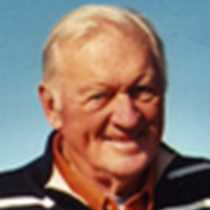Clarkston, Washington and Lewiston, Idaho
Few Lindblad Expedition/National Geographic guests visit “Turtle Island.” But today that was our destination.
Turtle Island, the legendary home of all American Indian Nations, hosted guests aboard jet boats into the northern reaches of Hell’s Canyon (Snake River) and among the Lewis & Clark sites of Idaho’s panhandle (Clearwater River). Both expeditions were among the people, oral histories and traditional land of the Nez Perce Indians. The rich 10,000-year history of the Nez Perce can be found in every local canyon wall, side stream, or hilltop. The ancient name of our hosts is “Nimipuu,” or “The People.”
One is reminded of Shakespeare’s phrase: “What’s in a Name?” Nearby our disembarkation point is the small town of Asotin, Washington, named by the Nez Perce people for the once plentiful schools of Snake River eels. The National Geographic Sea Bird’s docking town of Clarkston was at one time known as Jawbone Flats, later Vineland. Across the Blue Bridge connecting the two confluence cities rests Idaho’s first state capitol, Lewiston, honoring the intrepid Captain Meriwether Lewis.
After an early stop downriver from Clarkston, buses took guests westward into Lewis & Clark country, while other guests boarded large jet boats to explore basalt walls, Russian olives trees, and eddies of the roiling Snake River.
Jet boat passengers roamed between whirlpools and rocks, with stops at Cache Creek (snacks) and Beamer’s Lodge (lunch). An osprey was seen on the wing, several mule deer drank from the fast-moving river and big-horned sheep roamed the side hills. The geological designs and sculptures of ancient basalt were breathtaking.
Upcountry, along the banks of the Clearwater River, which was once known by Nez Perce people as Kos-Kos-Kee, (meaning “Clearwater” in the Nez Perce language), local guide Linwood Laughy described specific Lewis & Clark campsites. Guests disembarked the motor coach several times to look at the exact Corps of Discovery locations. Lin read from the captain’s journals to merge the “feel” of specific locations with the original words of Captains Lewis and Clark. Sergeant Bass’ rustic diary was also a down-to-earth source of local Corps sites.
The National Geographic Sea Bird stayed at the Clarkston dock until 11:00pm this evening, providing ample opportunity for guests to walk along the well-lit river path or poke into several nearby stores, hotels, and by-ways.




